Disclosure: This article contains affiliate links. We may earn a commission from purchases at no extra cost to you, which helps our travel content.
There's something profoundly transformative about watching a herd of dust-painted red elephants amble across Tsavo's rust-colored plains at sunset. The first time I witnessed this spectacle—these magnificent creatures seemingly born from the earth itself—I understood why this place changed my life trajectory years ago. After burning out in the tech world, it was here in Kenya where I rediscovered my purpose. Now, I return regularly, sometimes solo, sometimes with friends who've heard me wax poetic about Tsavo for years. This sprawling wilderness, comprising Tsavo East and West, forms Kenya's largest protected area and offers a safari experience that strikes the perfect balance between authentic adventure and attainable luxury. Whether you're tracking the legendary man-eaters of Tsavo, photographing elephants bathing in red dust, or simply soaking in the vastness of the African savanna, this comprehensive guide will help you plan an unforgettable week in one of Africa's most spectacular wildlife havens.
Why Tsavo Should Top Your Safari Bucket List
When people imagine an African safari, they often picture the Masai Mara or Serengeti. But Tsavo offers something distinctly different—a raw, less-trafficked wilderness that spans a staggering 22,000 square kilometers. This isn't just another safari destination; it's Kenya's oldest and largest national park, where wildlife roams across vast distances just as they have for millennia.
What truly sets Tsavo apart is its famous red elephants—not a separate species, but regular African elephants that have adapted the habit of dust-bathing in the park's distinctive rust-colored volcanic soil. The result is a breathtaking sight as these crimson-tinged giants move across the landscape, creating photographic opportunities you simply won't find elsewhere.
Beyond the elephants, Tsavo harbors fascinating history. The park gained notoriety in 1898 when two male lions terrorized railway workers building the Kenya-Uganda railway, reportedly killing over 100 people. These 'Man-Eaters of Tsavo' became the stuff of legend (and a Hollywood film). Today, the park's male lions are often maneless, adding to their unique mystique.
What I love most about Tsavo is how it balances accessibility with authenticity. You'll encounter other safari vehicles, but nothing like the parade you might find in more popular parks. Here, you can still experience moments of profound solitude, where it feels like you're the first person to discover a particular vista or wildlife interaction.
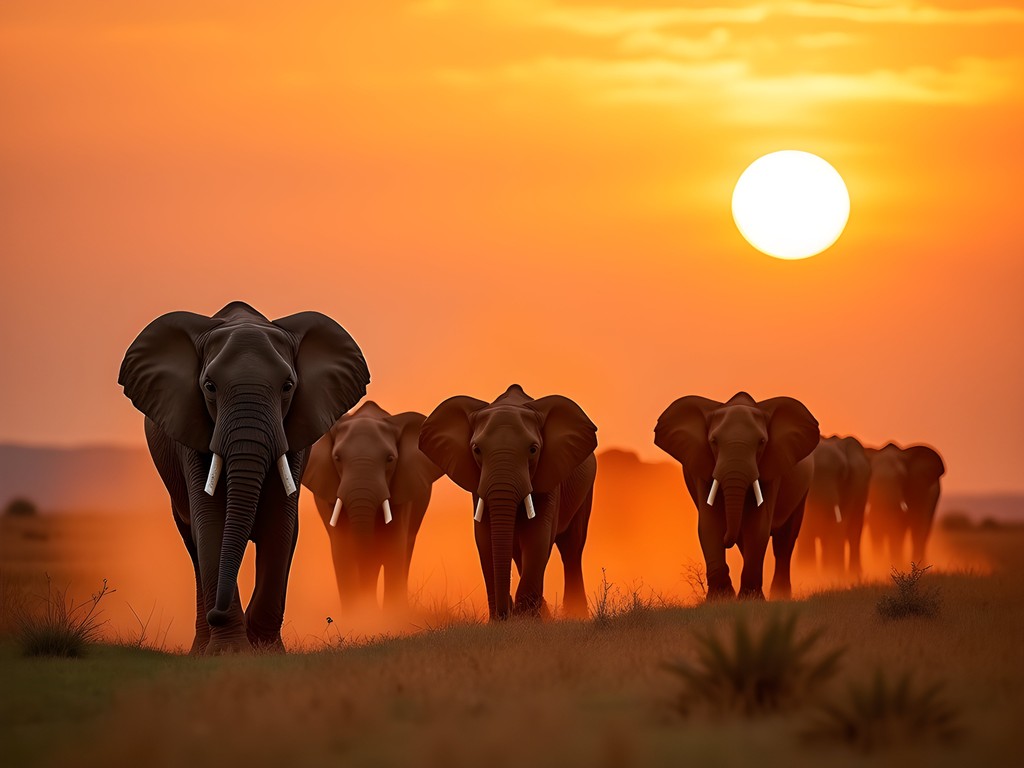
💡 Pro Tips
- Visit both Tsavo East and West if possible—they offer distinctly different landscapes and wildlife viewing opportunities
- The red elephants are most vibrant in the dry season when dust-bathing is frequent
- Book a private guide rather than joining group safaris for a more personalized experience
Planning Your Tsavo Safari: Logistics and Timing
The first thing to understand about Tsavo is its seasonal rhythms. I've visited during both wet and dry seasons, and each offers distinct advantages. The dry season (June to October and January to February) provides the classic safari experience—wildlife congregates around water sources, vegetation thins, and visibility improves dramatically. However, the wet seasons (March to May and November to December) transform the landscape into a photographer's paradise of lush greenery and dramatic skies.
For a luxury experience, I recommend flying into the park rather than driving from Nairobi. The road journey takes 5-6 hours on sometimes challenging roads, while a flight from Wilson Airport in Nairobi delivers you to one of several airstrips in just an hour, maximizing your time in the wilderness. I've used Safarilink Aviation for years and have always been impressed by their reliability and safety record.
For accommodations, Tsavo offers everything from mid-range lodges to ultra-luxury tented camps. My personal recommendation is to split your time between Tsavo East and West, spending 3-4 nights in each. In Tsavo East, Satao Camp provides an authentic safari experience with unexpected luxury touches, while Finch Hattons in Tsavo West offers a level of sophistication that would impress even the most discerning travelers.
Regarding safari vehicles, insist on a 4x4 with a pop-top roof for photography. The ability to stand and rotate 360 degrees while shooting makes all the difference when that perfect wildlife moment presents itself. My go-to camera setup includes a telephoto zoom lens that handles everything from landscape shots to close-up wildlife portraits without requiring multiple lens changes in dusty conditions.
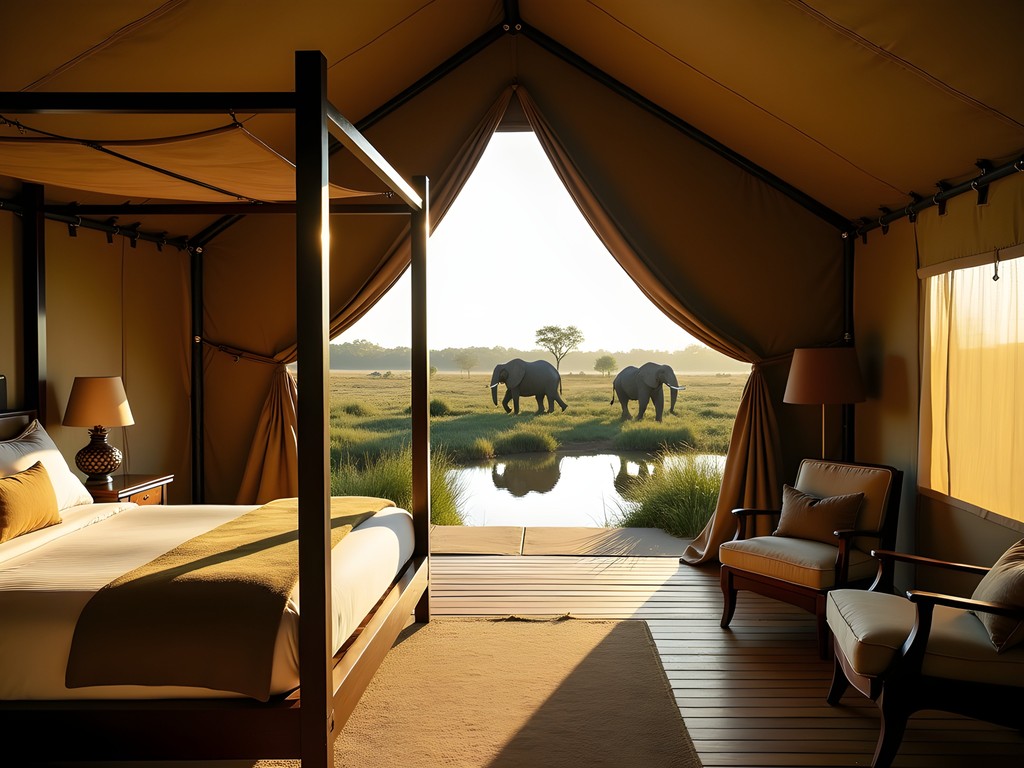
💡 Pro Tips
- Book accommodations at least 6-8 months in advance for peak season (July-September)
- Pack neutral-colored clothing (khaki, olive, tan) to blend with the environment
- Request a private safari vehicle even if it costs extra—the flexibility is worth every penny
The Ultimate Tsavo Safari Itinerary
After multiple visits to Tsavo, I've refined what I consider the perfect week-long itinerary that balances wildlife viewing with relaxation and cultural experiences.
Day 1-3: Tsavo East Begin your adventure in Tsavo East, the larger and more arid portion of the park. After settling into your lodge, embark on an afternoon game drive to Mudanda Rock, a massive whale-backed rock that serves as a natural wildlife observation platform overlooking a permanent water hole. The sight of dozens of elephants gathered below while you enjoy sundowners is quintessential Africa.
Dedicate your second day to the Yatta Plateau, the world's longest lava flow at 300km. The area around the Galana River offers exceptional wildlife viewing, particularly of large elephant herds. For photography enthusiasts, the binoculars I carry have proven invaluable for spotting distant wildlife before setting up camera equipment.
On day three, explore the Aruba Dam area, known for attracting diverse wildlife during the dry season. Request a packed breakfast from your lodge and depart before dawn—the early morning light creates magical conditions for photography, and predator sightings are more common.
Day 4-7: Tsavo West Transfer to Tsavo West, stopping at Mzima Springs en route. These crystal-clear springs produce 250 million liters of water daily and support hippos, crocodiles, and various fish species. The underwater viewing chamber offers a fascinating perspective of this ecosystem.
Spend day five exploring the Shetani Lava Flows and nearby Chaimu Crater, geological wonders that provide context to the region's volcanic history. The black lava fields create a stark contrast against the surrounding savanna—a photographer's dream.
Reserve day six for Ngulia Rhino Sanctuary, home to a protected population of the critically endangered black rhino. While sightings aren't guaranteed, the conservation story here is compelling, and the landscape is breathtaking regardless.
On your final day, consider splurging on a hot air balloon safari for an unparalleled perspective of the park. Floating silently above the landscape at dawn, watching wildlife below unaware of your presence—it's the perfect culmination of your Tsavo adventure.
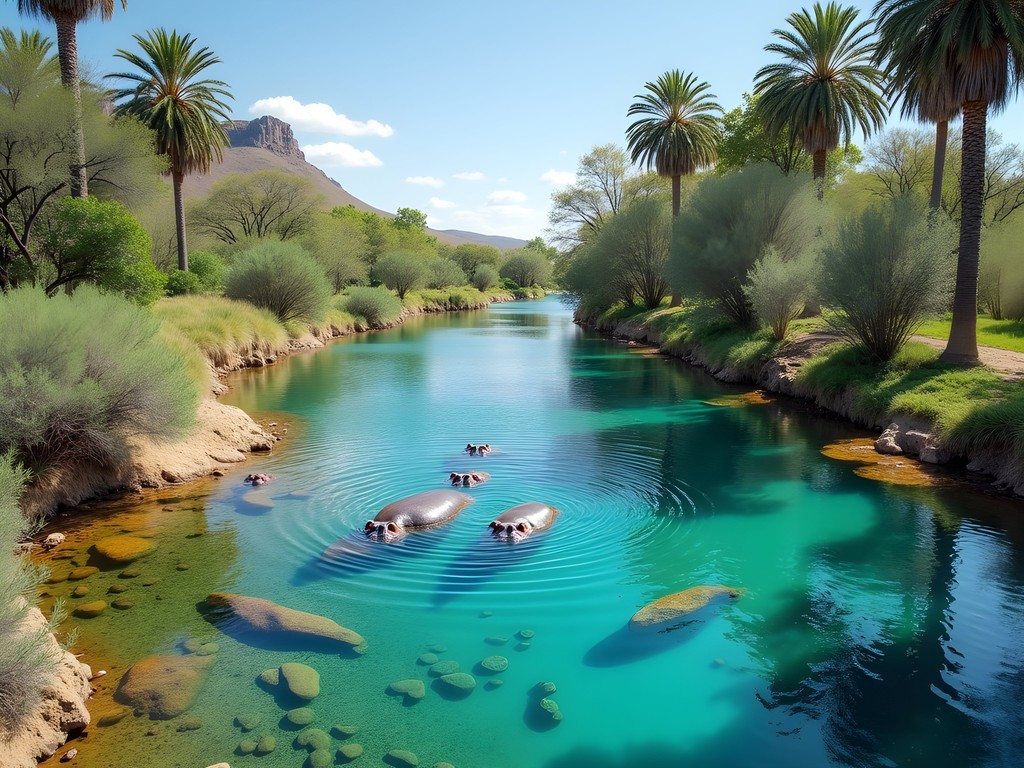
💡 Pro Tips
- Rise early—the best wildlife viewing is typically between 6-9am and 4-6:30pm
- Carry a good pair of binoculars even if you have a telephoto lens
- Schedule at least one full-day game drive with packed meals to reach remote areas
Wildlife Encounters: Beyond the Red Elephants
While Tsavo's red elephants rightfully steal the spotlight, the park's biodiversity extends far beyond these iconic pachyderms. Having spent countless hours in the field here, I've developed strategies for maximizing wildlife encounters that go beyond the standard game drive experience.
Tsavo hosts all of the Big Five, though rhinos are primarily found in protected sanctuaries within the park. Lion sightings, while less frequent than in the Masai Mara, are particularly special because of the males' unique characteristic—many sport minimal manes or none at all, a fascinating adaptation to the hot, thorny environment.
For bird enthusiasts, Tsavo is heaven. With over 500 recorded species, including the striking Vulturine Guineafowl and the rare Friedmann's Lark, dedicated birding sessions should be built into your itinerary. I recommend carrying a field guide rather than relying solely on apps, as connectivity can be spotty.
One of my most memorable Tsavo experiences involved spending three hours at a single waterhole, simply observing the complex social dynamics as different species arrived, established hierarchies, and departed. This patience-testing approach often yields rewards that rushed game drives miss entirely.
For photographers, I suggest focusing on behavior rather than just identification. Capturing elephants dust-bathing, giraffes in their awkward drinking stance, or baboons grooming one another tells a more compelling story than standard portraits. Position your vehicle with consideration for lighting—early morning and late afternoon provide that golden glow that elevates wildlife photography from documentary to art.
Finally, don't overlook the smaller creatures. Dung beetles performing their crucial ecological role, agama lizards displaying brilliant breeding colors, and the intricate construction of weaver bird nests all provide fascinating insights into the complex web of life that makes Tsavo so special.

💡 Pro Tips
- Bring a good spotting scope for distant wildlife viewing and bird identification
- Learn to identify tracks and signs—they tell stories about nocturnal activity you might otherwise miss
- Allocate time specifically for night drives to see nocturnal specialists like genets, civets, and aardvarks
Cultural Connections: The People of Tsavo
A truly enriching safari experience extends beyond wildlife to include meaningful cultural interactions. The lands surrounding Tsavo are home to several distinct ethnic groups, including the Taita, Kamba, and Maasai peoples, each with rich cultural traditions and complex relationships with the park and its wildlife.
On my first visit to Tsavo—the one that changed my life's trajectory—I spent an afternoon with Taita elders who shared stories of traditional conservation practices that predated the formal establishment of the national park by centuries. This perspective fundamentally shifted how I view the relationship between people and protected areas.
Many luxury lodges now facilitate authentic cultural experiences that go beyond the performative singing and dancing often presented to tourists. I particularly value programs that support community-led initiatives, such as visits to local schools or participating in conservation projects that employ local residents as rangers and guides.
The Swahili phrasebook I carry has proven invaluable for connecting with local staff and community members. Even basic greetings and thank-yous in Swahili demonstrate respect and open doors to more meaningful exchanges.
I recommend setting aside at least half a day for a community visit. At Ithumba Camp in northern Tsavo East, I participated in a walking safari led by former poachers now employed in conservation, providing fascinating insights into both wildlife behavior and the complex socioeconomic factors driving conservation challenges.
Remember that the people living alongside Tsavo face real hardships from human-wildlife conflict—elephants raiding crops or lions taking livestock represent significant economic losses. Understanding these challenges adds important context to your safari experience and may inspire you to support organizations working on innovative solutions that benefit both wildlife and local communities.
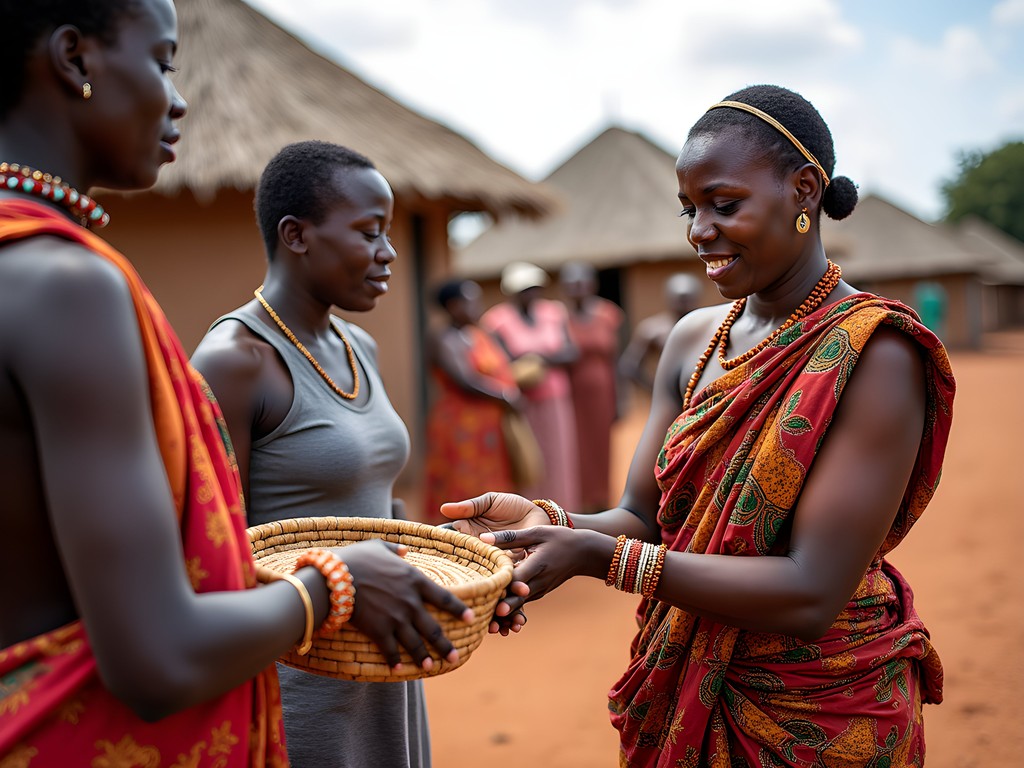
💡 Pro Tips
- Learn basic Swahili greetings and thank-yous—they're deeply appreciated
- Ask permission before photographing local people, and be prepared to pay a small fee if requested
- Support community tourism initiatives that provide direct economic benefits to local residents
Final Thoughts
As my small aircraft lifted off from the dusty airstrip on my most recent departure from Tsavo, I watched the landscape unfold below—a mosaic of red earth, acacia woodland, and meandering wildlife trails. That first transformative visit years ago pulled me from corporate burnout into a life where adventure and meaning coexist. Each return deepens my connection to this remarkable ecosystem. Tsavo isn't just a destination; it's a relationship with wilderness that evolves over time. Whether you're tracking red elephants across volcanic plains, sharing stories with Taita elders, or simply sitting in contemplative silence as the African sunset ignites the landscape, Tsavo offers experiences that transcend typical tourism. This ancient land has stories to tell for those patient enough to listen. When will you hear them?
✨ Key Takeaways
- Tsavo offers a less crowded, more authentic safari experience than many more famous parks
- The unique red elephants are best viewed during dry season when dust-bathing is frequent
- Splitting time between Tsavo East and West provides the most comprehensive experience
- Cultural connections with local communities add essential context to wildlife viewing
📋 Practical Information
Best Time to Visit
June to October and January to February (dry seasons)
Budget Estimate
$5,000-8,000 per person for a 7-day luxury safari (including flights, accommodation, and activities)
Recommended Duration
7 days minimum (3-4 days each in Tsavo East and West)
Difficulty Level
Moderate
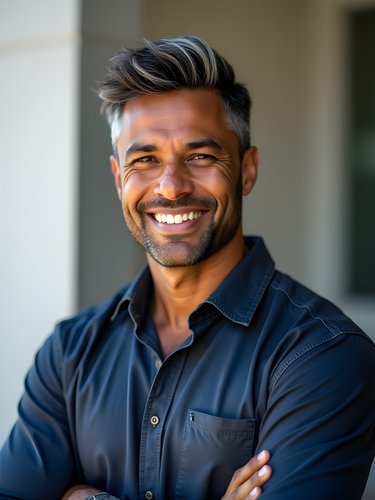















Comments
springclimber
First time safari-goer here! Just got back from Tsavo last week and this blog was my main planning resource. The tip about bringing binoculars was spot on - we saw so much wildlife from distances that would've been impossible to appreciate without them. The red elephants were even more striking in person! One thing I wish I knew beforehand: bring more memory cards than you think you'll need. I filled up 64GB in just two days of wildlife photography. Also, the temperature difference between morning and midday was huge, so layers are essential.
starmood
Are the roads really as bad as people say? Worried about getting around.
hikingexplorer
They're bumpy but not terrible. Just book a proper safari vehicle and you'll be fine!
Kimberly Murphy
Riley, this brings back such amazing memories of my Tsavo trip last year! For anyone planning to go, I'd highly recommend spending at least 2 days in Tsavo East and 2 in West to truly appreciate the differences. The Mzima Springs in Tsavo West are absolutely magical - there's an underwater viewing chamber where you can watch hippos swimming! I captured incredible footage with my action camera which handled the low light surprisingly well. And don't miss Mudanda Rock in Tsavo East - it's like a mini Uluru where elephants often gather at the water hole below.
startime
Just booked our trip after reading this! Can't wait to see those red elephants in person.
islandwalker1723
Great post! We're planning a trip for next October. Is that a good time for wildlife viewing in Tsavo? Also wondering about accommodation - we're torn between the tented camps and the lodges. Any recommendations for a family with teenagers?
Kimberly Murphy
October is fantastic for Tsavo! It's after the dry season so animals gather around water sources. For teens, I'd recommend Kilaguni Serena Safari Lodge. Great balance of comfort and wilderness immersion, plus they have guided bush walks that teens love. The night drives were a highlight for my nephew!
islandwalker1723
Thanks Kimberly! Night drives sound perfect for the kids. Appreciate the recommendation!
Raymond Hassan
Excellent breakdown of Tsavo, Riley. I visited last year and found the park's division into East and West creates two distinctly different safari experiences. The red elephants are indeed a highlight, but I'd add that the Yatta Plateau in Tsavo East - one of the world's longest lava flows - offers spectacular vantage points for photography. For those considering logistics, the drive from Nairobi is manageable but dusty; I'd recommend allowing a full day for travel to avoid rushing. One thing to note: cell coverage is spotty at best, so download offline maps beforehand.
springclimber
Thanks for mentioning the Yatta Plateau! Would you say it's worth spending an extra day just for that area?
Raymond Hassan
Absolutely. The plateau offers unique biodiversity and landscape views you won't find elsewhere in Kenya. I'd recommend early morning when the light hits the terrain perfectly.
hikingexplorer
Those red elephants look absolutely incredible! Never knew they existed before this post.
springhero
What's the best accommodation option in Tsavo? Tented camps worth the extra cost?
Frank Garcia
The tented camps are amazing if you can afford them - nothing beats falling asleep to the sounds of the wilderness. Kilaguni Serena was worth every penny when I splurged for one night. But the public campsites are perfectly fine too if you're on a budget.
happybuddy
OMG these photos are STUNNING!!! 😍😍😍 I never knew elephants could be red! Nature is so incredible. Did you feel safe the whole time? I really want to go but I'm nervous about being so close to wild animals!
tripexplorer1707
Not the author but I felt super safe when I did a safari. The guides know what they're doing and the animals mostly ignore the vehicles.
happybuddy
That's reassuring, thanks! Maybe I'll be brave enough to book it!
travelphotographer
Amazing post! I'm planning a trip in January and photography is my main focus. What's the best time of day to catch those red elephants in good light? Also, did you find a telephoto lens necessary or can you get reasonably close to the wildlife? I'm debating whether to bring my heavy 150-600mm or just stick with my 70-200mm and teleconverter.
Riley Griffin
Golden hour is magical in Tsavo - about an hour before sunset is when the elephants look their reddest against the landscape. As for lenses, you can get decently close to elephants in some areas, but I'd recommend at least 300mm equivalent for most wildlife. The 70-200 with teleconverter should work for many situations, but you might miss some distant shots.
travelphotographer
Thanks for the advice! Looking forward to those golden hour shots.
Venture X
Premium card with 2X miles, $300 travel credit, Priority Pass